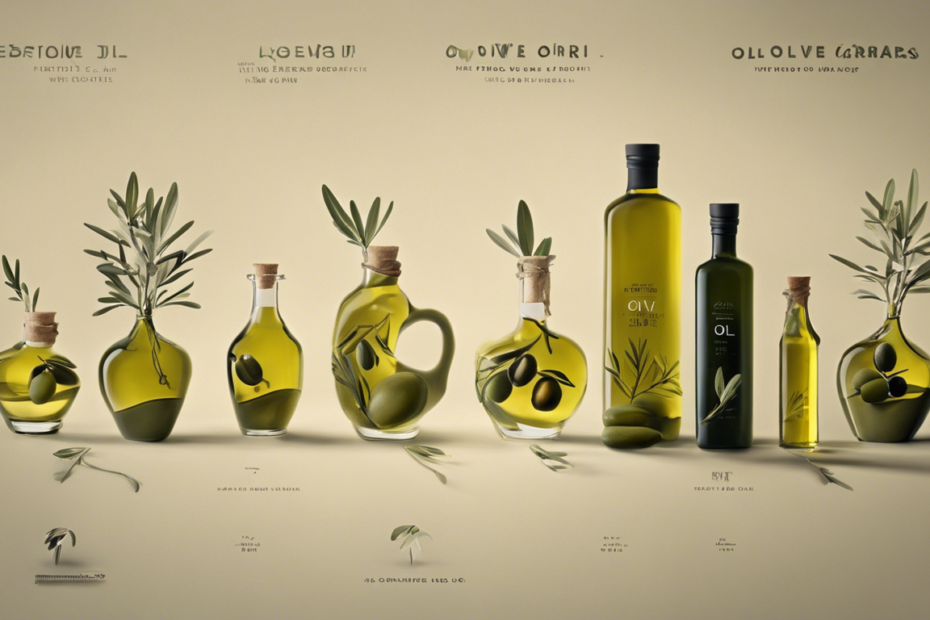Have you ever wondered, ‘Where does the best olive oil come from?’ This liquid gold, beloved by chefs and home cooks alike, has a rich history and a variety of regions that each claim to produce the finest oil.
In this article, we’ll take a laid-back journey through the origins of olive oil, exploring the historical backdrop of its production, the geographical hotspots that yield top-quality oils, and the factors that can influence their taste and quality.
Plus, we’ll peek into the future of olive oil sourcing and production.
So pour yourself a glass, let’s dive in!
Factors Affecting Olive Oil Quality
When you’re on the hunt for the best olive oil, it’s essential to consider a few key factors that can make all the difference in quality.
First off, the region where the olives are grown plays a huge role – countries like Italy, Spain, and Greece are often hailed for producing some of the finest oils in the world.
The climate and soil conditions in these regions create the perfect environment for olive trees to thrive, leading to richer flavors and more robust oils.
Another important factor is the harvesting method; olives should be picked at the right time and handled gently to preserve their quality.
Cold pressing is another technique that affects flavor and nutrients; this method ensures that the oil retains its natural taste and health benefits.
So, when you’re looking for top-notch olive oil, keep an eye on its origin, production methods, and even the variety of olives used – it all adds up to that delicious drizzle of liquid gold!
The Future of Olive Oil Sourcing and Production
When you think about the future of olive oil sourcing and production, it’s hard not to wonder, ‘where does the best olive oil come from?’ As consumer demand grows for high-quality, sustainably sourced oils, regions like Italy, Spain, and Greece are stepping up their game, but new players are entering the ring, too.
Countries in South America, like Argentina and Chile, are gaining traction, and their unique climate is producing some seriously impressive oils that can rival the classics.
The focus is shifting not only to where these olives are grown but how they’re processed with eco-friendly methods, ensuring that best practices are followed from tree to table.
As technology improves and growers adopt more sustainable methods, we’ll likely see a boom in innovative cultivation techniques—maybe even blending traditional hand-harvesting with cutting-edge sustainable practices for a more responsible yet delicious product.
Plus, with consumers becoming more knowledgeable and curious about flavor profiles and farming methods, it won’t be long before the olive oil world is as varied and celebrated as fine wines!
Frequently Asked Questions
What historical regions are known for olive oil production?
Historically, regions like ancient Greece, Rome, and the Mediterranean have been well-known for their olive oil production.
These areas established the foundations of olive cultivation and oil extraction methods that are still in use today.
Which geographical areas produce the best olive oil?
Some of the top regions for high-quality olive oil include Italy, Spain, Greece, and Turkey.
Each of these countries offers distinct flavor profiles due to their specific varieties of olives and local production practices.
What factors influence the quality of olive oil?
Several factors affect olive oil quality, including olive variety, climate, soil type, harvesting methods, and processing techniques.
The freshness of the oil and adherence to quality standards also play significant roles.
Is there a future for olive oil production as demand grows?
Yes, as demand for high-quality olive oil continues to rise, we can expect innovations in sustainable farming practices, new cultivation regions emerging, and potentially stricter quality controls to ensure the best products reach consumers.
How can I identify high-quality olive oil when shopping?
Look for labels that indicate the oil is ‘extra virgin,’ check for harvest dates, and pay attention to origin indications.
Taste tests and certifications from reputable organizations can also help you choose high-quality olive oil.
